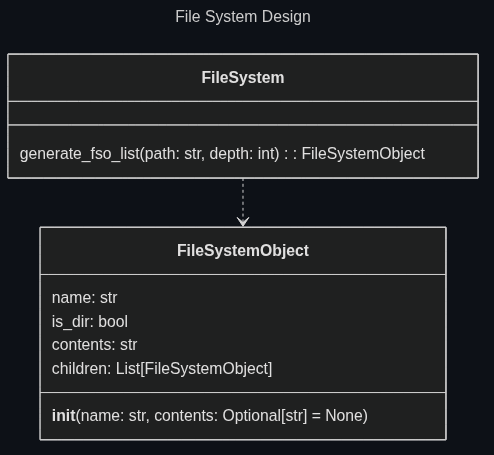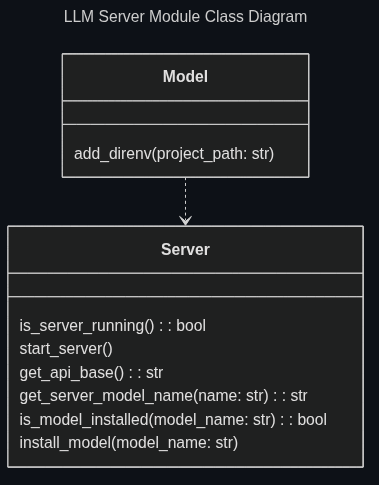Implementation
Source Code Organization
Directory Structure
The main AutoDev source code is located at src/main, with it’s entry point being src/main/main.py
The test source code is located at src/test, with it’s entry point being src/test/main.py
Module Structure
Since python is the language choosen, some decisions should be made in terms of module code organization, as there are varying approches possible when considering python standards.
Given the projects small scope, the barebones module system is used.
A module is define by a python file.
Collection of modules can be created by grouping files in directories.
The __init__.py file format was considered, as it can work as an interface between modules, defining what methods are exposed to users of a module, but given the limited scope of the project it has been omitted.
Private methods and attributes are simply identified by a starting underscore (_).
Although this method is less ‘safe’ it is preffered for this project.
Whenever the project complexity should increase a refactor of the source code organization would be considered.
Directory tree rappresentation
The FileSystem class is used to rappresent directory structures.
Since the LLM must understand the project contents to generate the dev env config, this class is used to rappresent the directory tree of the project.

Exceptions
During development the necessity to create custom exception types arose from the necessity of handling various usage errors in the correct manner, ensuring the user was correctly notified of the mistake.
First solution
Initially custom ‘per module’ exception types where employed.
.
├── module_a/
│ ├── module_a.py
│ └── exceptions.py
└── module_b.py
If module_b needed to catch an exception type defined in the module_a/exceptions.py file, it would import them accordingly.
This system proved fiddly and unneccessarily verbose when the same exceptions would be catcher by modules with further dependency from the module defining them.
If a module_c is introduced, that depends on module_b and must catch custom exceptions two possible solutions can be used:
module_ccan import the exceptions frommodule_a, creating a maybe undesired dependency betweenmodule_candmodule_amodule_bcan itself define custom exceptions that can be imported bymodule_c
The second solution is preferabble but if the new exceptions defined in module_b are simple copy pastes of the exceptions defined by module_a this solutions seems to violate the DRY principle.
Second solution
Custom exceptions have been defined in their own module, errors.py, and only the modules that need to throw or catch the exceptions import them.
This allows the modules that catch the exceptions to only depend on the exceptions module and not depend on the modules that actually throw them.
Final solution
During development the necessity to return different exit values based on the execution result of the tool arose from requirements.
Also the presence of error text provided to the user in the handlers module appeard to be a major separation of concerns principle violation.
For this reason a more powerfull error handling structure was implemented.
TODO complete this
- only services depend on the errors they throw, not the handlers
- services can create the error passing helpful information
- only errors module knows error code and message
LLM Server Module
Although the high level LLM API used is litellm, all models used are available through ollama.
To use ollama models a local ollama model should be running on the system for the litellm API to work.
A new module, server.py, has been created to expose methods that can be used to interact with the language server.

This module is an implementation of the ‘anti-curruption layer’ pattern relative to the ollama server dependency, while the Model module is an ‘anti-curruption layer’ relative to the litellm dependency.
| Back to index |
| Previous Chapter |
| Next Chapter |